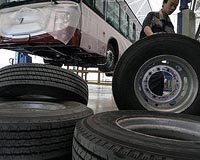 |
Los Alamos NM (SPX) May 19, 2011 The long-held, but unproven idea that helium-4 enters into an exotic phase of matter dubbed a "supersolid" when cooled to extremely low temperatures has been challenged in a new paper published recently in Science. Los Alamos National Laboratory researchers Alexander Balatsky and Matthias Graf joined Cornell University physicist J.C. Seamus Davis and others in describing an alternative explanation for behavior of helium-4 that led scientist to believe for nearly 40 years that the substance could hold properties of a liquid and solid at the same time when cooled to near Absolute Zero. Helium-4 is the same gas used to fill carnival balloons. When cooled to temperatures below minus 452 degrees below zero Fahrenheit, helium-4 becomes a liquid-and an extraordinary liquid at that. At very low temperatures, helium-4 can become a "superfluid," a liquid without viscosity that can flow unhampered by friction. When placed under pressure at these low temperatures, helium-4 atoms arrange in an orderly lattice, or solid, which physicists nearly 40 years ago believed could behave in a similarly frictionless manner as a supersolid-a unique theoretical state of matter in which a bulk lattice of material could move as a single frictionless object. Physicists came to the idea that helium-4 becomes a supersolid after oscillating liquid helium-4 back and forth in a special apparatus that measured the rotational speed. When the researchers measured these motions under conditions that would induce a solid form of helium-4, they noticed that the oscillation speed increased slightly, as if some part of the mass had come loose and was uninhibited by interaction with the rest of material. This effect was interpreted as evidence of supersolidity, a phase in which some of the mass of a solid does not move with the rest of solid lattice, but rather flows freely through the lattice. Los Alamos researchers Balatsky and Graf posited that the effect could be described by an entirely different explanation. They believed the change in oscillation speed could have arisen as the result of a gradual "freezing out" of imperfections within the helium-4 lattice. To illustrate on a very basic level, Balatsky uses a rotating egg. A fresh egg is a mixture of yolk and albumen within a shell. When spun, the interaction of the liquid within the eggshell results in a relatively slow rotation. If the egg is frozen, however, the imperfections within the shell freeze out, and the egg spins much faster-like the increase in oscillation speed observed in the early torsional oscillation experiments. To test this simplified analogy, Balatsky, Davis and colleagues devised an experiment using a torsional oscillator that was 10,000 times more sensitive than the ones used in previous experiments. The researchers looked at results of varying temperature at a constant oscillation speed versus results of varying oscillation speeds at constant temperature. They compared the microscopic excitations within solid helium-4 under both conditions and found that the plotted curves were nearly identical. Perhaps more significantly, the researchers didn't see a sudden, clearly demarked change in the relaxation of microscopic defects at some "critical temperature" during their experiments. Lack of such a sharp demarcation provides evidence against a change in phase of helium-4 to a supersolid. Instead, it suggests that the earlier observed behavior was the result of everyday physics rather than some exotic behavior. "While this experiment does not definitively rule out the possibility of the formation of a supersolid in helium-4, the fact that we have provided a reasonable alternative explanation for the observed behavior in earlier experiments weakens the argument that what was being seen was a phase change to a supersolid," Balatsky said. In addition to Los Alamos researchers Balatsky and Graf, and Cornell physicist Davis, co-authors of the paper include: Ethan Pratt, formerly of Cornell, but now at the National Institute of Standards and Technology; Ben Hunt and graduate student Vikram Gadagkar at the Massachusetts Institute of Technology; and Minoru Yamashita at Kyoto University. The Science paper may be found here.
Share This Article With Planet Earth
Related Links - Space Technology News - Applications and Research
 When is it worth the cost of remanufacturing
When is it worth the cost of remanufacturingBoston MA (SPX) May 18, 2011 It seems like a no-brainer: Remanufacturing products rather than making new ones from scratch - widely done with everything from retread tires to refilled inkjet cartridges to remanufactured engines - should save a lot of energy, right? Not so fast, says a new study by researchers at MIT. In some cases, the conventional wisdom is indeed correct. But out of 25 case studies on products in ei ... read more |
|
| The content herein, unless otherwise known to be public domain, are Copyright 1995-2010 - SpaceDaily. AFP and UPI Wire Stories are copyright Agence France-Presse and United Press International. ESA Portal Reports are copyright European Space Agency. All NASA sourced material is public domain. Additional copyrights may apply in whole or part to other bona fide parties. Advertising does not imply endorsement,agreement or approval of any opinions, statements or information provided by SpaceDaily on any Web page published or hosted by SpaceDaily. Privacy Statement |